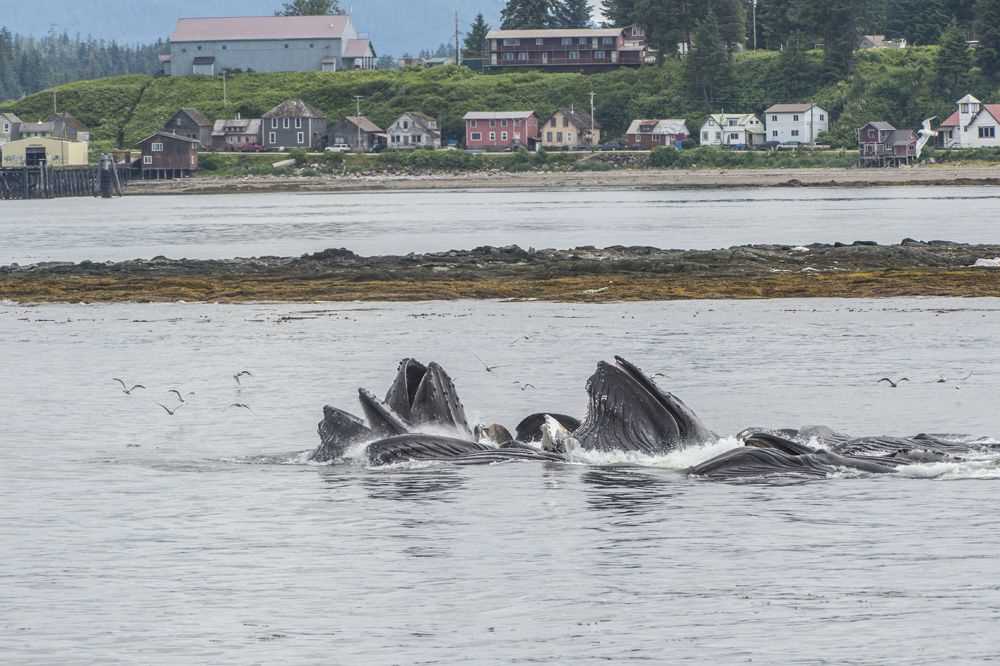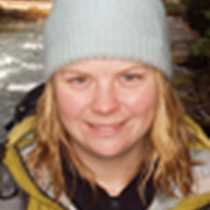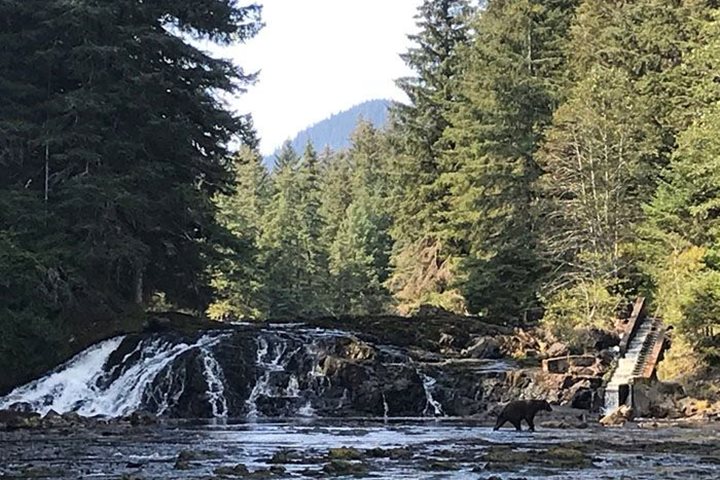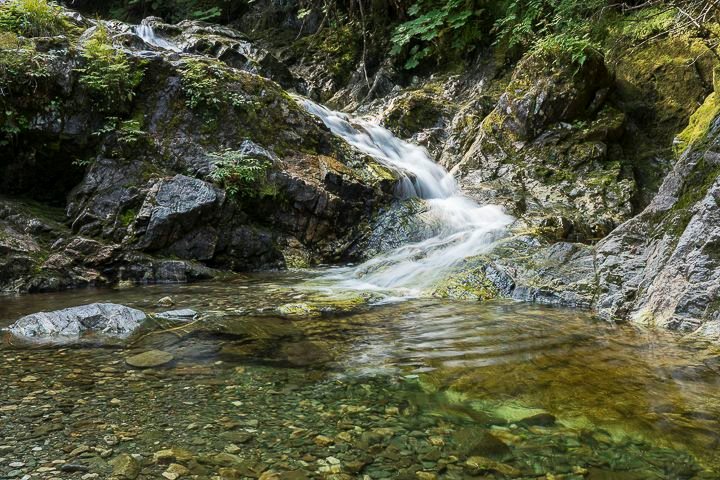On the last full day of our expedition, we were rewarded with a truly amazing wildlife sighting—not one, but two groups of humpback whales bubble-net feeding! The whale blows were followed by sequential dives, with each whale showing its flukes before it disappeared from the surface. Thirteen flukes in one group, seven in the other. Twenty humpback whales cooperatively feeding within our view from the National Geographic Sea Bird. With the hydrophone, we could hear the two distinct calls of the “singers”, one from each group, as the whales corralled the herring from the depths of the sea to the water’s surface. Mesmerized, we watched the humpback whales blow, dive, and surface in unison, and then repeat the pattern that never ceased to amaze us. After an exciting morning, we crossed Chatham Strait, drenched in sunshine, and entered Peril Strait, in search of our last shore adventure.
Saook Bay greeted us with peaceful waters dotted with crab pots and breaching salmon, and surrounded by steep, forested walls. Beyond the inviting meadow at the end of the fjord, snowy mountain peaks rose. From the gravel beach, we ducked into the forest, greeted by a massive, old-growth Sitka spruce tree. From a trunk that would require nearly 14 “tree-huggers” to encompass it, the tree subdivided into five separate trunks, each of which would be a large tree on its own. As we followed trails created by the local wildlife, we encountered the remnants of logging equipment, river otter latrine sites, banana slugs, and the tracks of Sitka black-tailed deer and brown bears. We explored the streams and meadow imagining life as a bear, and eventually made our way along the shoreline back to the landing beach.
At 8:30 p.m., the sun was still shining brightly when a pod of killer whales was spotted in Peril Strait. Coats and cameras were quickly unpacked as we returned to the bow for, yet another, marine mammal sighting. This group of resident or fish-eating killer whales was very active. The calf and its older family members frolicked at the water surface, occasionally tail-lobbing and even spy-hopping. After a brief, but memorable time, the killer whales swam off into Chatham Strait and our attention was redirected to a black bear foraging on the shore. The sun began to dip behind the mountains and the light of our last day of exploration faded.
Humpback whales cooperatively feeding, killer whales among icebergs, black and brown bears foraging, sea otters surrounded by kelp, “gangs” of rowdy Steller sea lions, bald eagles soaring overhead, the lush temperate rain forest, colorful local communities…rain or shine, the lands and waters of Southeast Alaska offered us memories that will last a lifetime.









